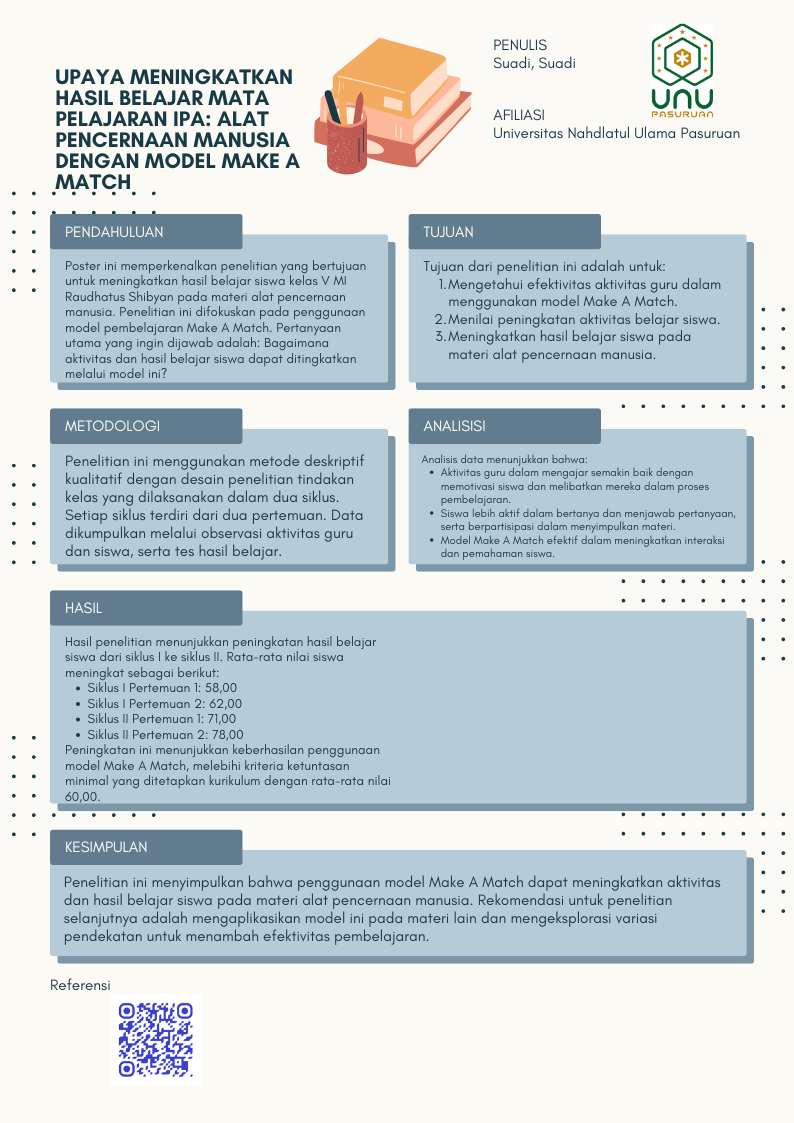Pintar Olah Limbah Plastik: Inovasi Hijau Di Tambak Lekok, Pasuruan
Keywords:
Limbah Plastik, Inovasi HijaAbstract
Sampah plastik menjadi masalah lingkungan serius yang memerlukan perhatian khusus, terutama di daerah pesisir seperti Tambak Lekok, Kecamatan Lekok, Kabupaten Pasuruan. Dalam kegiatan ini, kami bertujuan untuk meningkatkan kesadaran masyarakat mengenai pentingnya pengelolaan limbah plastik. Pertanyaan yang ingin dijawab adalah: Bagaimana pemanfaatan limbah plastik dapat meningkatkan kesejahteraan sosial dan ekonomi masyarakat setempat?
Downloads

Published
How to Cite
Issue
Section
License
Copyright (c) 2023 Yusuf Yusuf, Eny Latifah, Rudi Abdullah

This work is licensed under a Creative Commons Attribution-ShareAlike 4.0 International License.

 Universitas Nahdlatul Ulama Pasuruan, Indonesia
Universitas Nahdlatul Ulama Pasuruan, Indonesia













 All publications by the CV. Bimbingan Belajar Assyfa [e-ISSN:
All publications by the CV. Bimbingan Belajar Assyfa [e-ISSN: